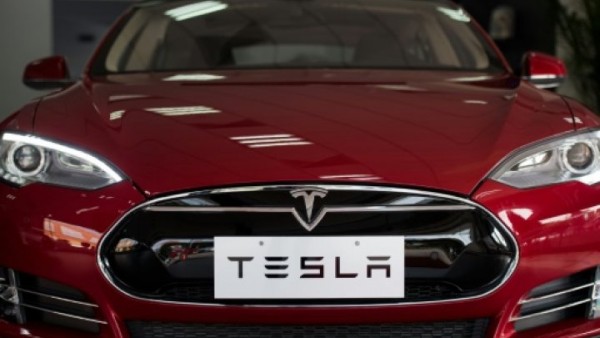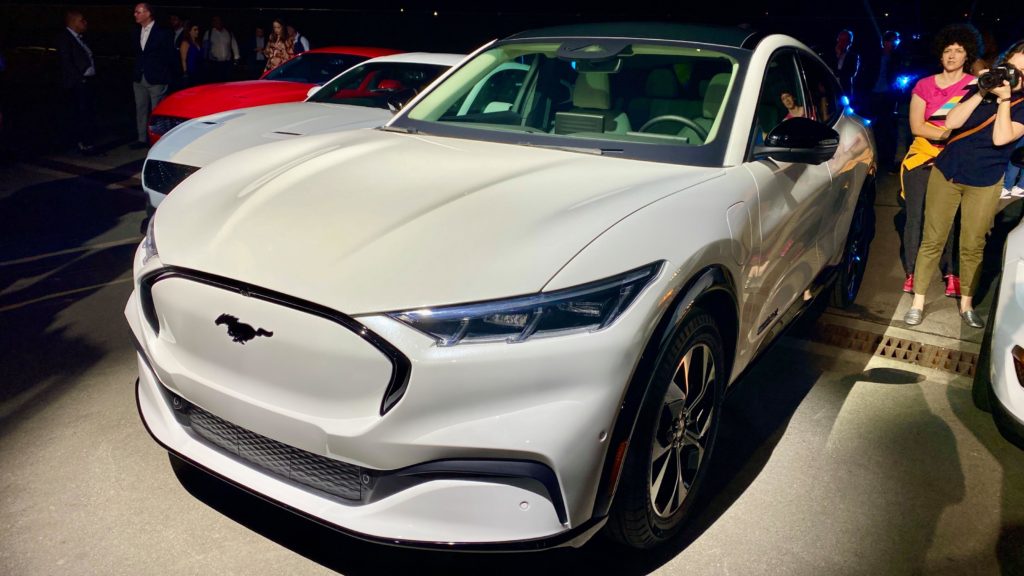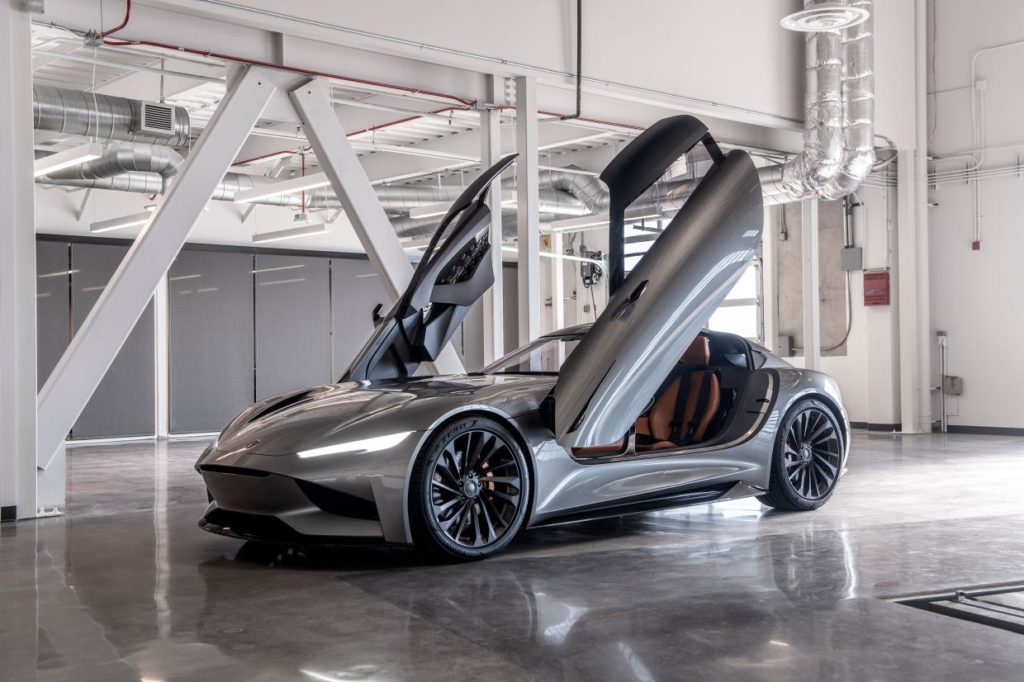Electric cars had their biggest year ever in 2019, even as storm clouds gathered over their future. The numbers were huge. Automakers committed $225 billion to electrification in the coming years. Electric vehicles (EVs) grabbed 2.2% of the global vehicle market over the first 10 months of 2019 as a slew of new models hit the road. Ford, which has yet to sell an all-electric vehicle, showed off the upcoming electric Mustang Mach-E (a crossover SUV) and an electric F-150 pick-up. Tesla, of course, shocked everyone by turning a profit and previewing a strange future with its “cybertruck,” potentially the Hummer for Millenials.

But it wasn’t all rainbows. Outside of China and Norway, where car buyers enjoy generous incentives, the market is still driven by early adopters rather than the mainstream. EV sales for the year have been sluggish. While some states such as California have seen EVs capture 8% of new sales (all-electric and plug-in hybrid), the rest of the country has not yet caught on. After doubling between 2017 and 2018, EV market share in the US had crept up from 1.6% last March to 1.8% a year later (pdf).
That hasn’t slowed automakers’ ambitions. They’re betting it’s better to get ahead of the now-inevitable shift to EVs than play catch up to established rivals and Tesla. But if demand fails to pick up the big bet may mean consolidation and bankruptcy for some.
Here are the highlights from 2019.
EVs sold even as the car market dipped. The Model 3 can claim most of the credit.
The year started off strong for electric cars. After selling a record 361,000 EVs in 2018, automakers foresaw a robust 2019. Yet for carmakers not named Tesla, sales sputtered out mid-year. Sales for the three dozen or so other EV models on the market declined by an about 20% in 2019 compared to a year earlier, while Tesla’s Model 3 sales tripled between January and September. Tesla represented an astonishing 78% of US EV sales as of October, estimated CleanTechnica, delivering about 123,000 Model 3s, and 30,000 Model S and Model X vehicles. But EVs proved to be a rare bright spot amid what appears to be a long-term decline in global auto sales now entering its third year, what industry analysts call “peak car.”
Tesla proved unstoppable, so far.
The naysayers are not done betting against Tesla CEO Elon Musk. But Tesla’s profitable quarter, surging Model 3 sales, the new Model Y, and the new Blade Runner-style pick-up truck mean its street cred and stock price are close to all-time highs. On Wall Street, its prospects are helped by a nearly complete China factory, plans for a European factory outside Berlin in Germany, the birthplace of the modern automobile—a move weighted with symbolism—and a cash stockpile totaling $5.3 billion, according to Sentieo. In 2019, Tesla barely escaped “production hell” after Model 3 production problems pushed Tesla within “single-digit weeks” of bankruptcy. Now it must replicate the feat with a new vehicle lineup starting with the Model Y.
VW, Ford, GM, and others are on Tesla’s tail
Legacy automakers have yet to build the equivalent of a Model 3: an affordable EV that people covet. But they’re spending billions of dollars to make it happen. “The whole market is moving toward electrification this year,” says Devin Lindsay of IHS Markit. While that transformation is still years (or perhaps decades) away, 2019 was the year they put money behind their talk, he says. Automakers and the suppliers collectively put $225 billion on the table for EV investments over the next five years. Volkswagen (VW) led the way with a $44 billion “electric offensive,” a promise to abandon the development of all new fossil fuel vehicles by 2026 and sell 40% EVs by 2030. Ford, after years of ambivalence, invested $500 million into electric truck startup Rivian on top of least $11 billion in new EV investments and launched the all-electric Mustang Mach-E SUV.

Although most of the money went to global production capacity, the focus was clearly on China which accounted for 28% of all EV investments, according to consulting firm AlixPartners, followed by Europe, and North America. It’s easy to see why: China, which has the world’s largest auto market, is considering mandating 60% of auto sales be electric by 2035.
EVs are still for early adopters in the US
For now, internal combustion engines aren’t going anywhere, especially in the US. AlixPartners’ global survey of customer demand for EVs asked if buyers’ next car would be electric in 2018. The average share in countries like Germany, Japan, Norway, and the UK topped 40% and rose as high as 73% in China. But in the US, only 14% of potential buyers planned to go electric this year. EVs will only go mainstream in the US, GM notes, once range, ease of ownership, and cost are addressed.
Layoffs rocked the auto industry
The auto industry’s sprint to embrace electric and autonomous vehicles didn’t include all of its factories and workers. Softening global auto sales didn’t help. Daimler, the parent of Mercedes-Benz, cut at least 10,000 jobs including 10% of its management. Volkswagen’s Audi announced 10% of its global workforce, 9,500 employees, would be let go by 2025. Ford made two rounds of steep job cuts this summer totaling more than 15,000. Nissan made similar reductions. The bloodletting probably isn’t over yet: Bloomberg predicts at least 80,000 more auto jobs will be cut in the coming years.
Incentives began to phase out
Price is still a primary consideration for most car buyers, and incentives are still needed to attract buyers in most markets. In Norway, for example, generous incentives have pushed EV market share close to 60%. However, China pulled back on the incentivesfueling its red-hot EV market. The UK did the same. In the US, tax-breaks awarded for manufacturers’ first 200,000 EVs have begun to phase out: Tesla and GM both crossed that threshold this year (credits phase out over time), and others will soon follow. The Trump Administration has proposed eliminating all incentives enacted during the Obama administration from renewable energy to EVs. “We pay a lot of attention to what any president says,” said Dan Turton, vice president for North American policy at General Motors, speaking to industry insiders after the announcement. “But this electrification movement is going forward anyway.”
Charging stations are outnumbering Tesla’s proprietary network in the US
For years, Tesla’s proprietary Supercharger system was the biggest one out there. But independent charging networks are catching up. EVgo, Greenlots, EV Connect, and Electrify America are all in the business of building out thousands of new stations to mirror their gasoline counterparts (Ford partnered with some of them to make recharging similar to swiping your credit card at the pump). While the US remains far behind Europe and China, the number of public charging stations in the US has soared from just 506 at the end of 2010 to over 20,000 in May 2019, according to US Department of Energy (DoE) data. Tesla’s fast Supercharger network has 1,636 stations in addition to its destination charging stations (with many more on the way).
EV range has finally come in range
It turns out 300 miles of electric range is what it takes for most people to feel comfortable in an EV, notes GM President Mark Reuss. Almost 90% of EVs sold were the six models with the highest range (238 miles or more)—Tesla’s, the Chevrolet Bolt EV, the Hyundai Kona and the Kia Niro. EVs have been making strides in that direction since 2011. The range for top-selling EVs has risen about 20% annually since 2011. Today, the median EV range is more than 125 miles while the top end is 335 miles, according to the DoE to estimates. As automakers finally enter mass-production, expect that range to keep rising well after 2019.
Hello, e-trucks
Fleets discovered electric vehicles. Electric buses have long been a favorite of government agencies, but the private sector is realizing electric delivery trucks can save them money. The biggest news was Amazon’s order of 100,000 electric delivery vans from the Detroit startup Rivian, highlighting a year of big orders across EV classes for trucking and deliveries, says Tony Seba, co-founder of RethinkX, a Bay Area think tank. And it wasn’t just businesses. Electric pick-ups and sport trucks entered the limelight with Tesla’s Cybertruck, Rivian’s $69,000 Rivian R1T, and Ford’s all-electric F-150 prototypewhich towed 1 million pounds.
Auto shows went electric
It’s hard to know if EVs should make their debut at gadget-obsessed affairs like the annual Consumer Electronics Show (CES) in Las Vegas or automotive shows showcasing vehicular power and performance. In 2019, the answer was both. While CES has long been a showroom for electric (and self-driving) cars for a while, this year the buzz at the world’s biggest auto shows from Tokyo to Los Angeles hovered around automakers’ EVs as they tried out new sizes (hulking SUVs) and concepts (e-scooters).
Budget-conscious EVs joined the high-end
Better range, more refined styles, and zippier acceleration all hit the market at or below the median cost of a car in the US: Kia’s $34,000 e-Soul (280-mile range) and $38,500 Niro (239-mile range), and the $36,500 Hyundai Kona Electric (258-mile range). The budget offerings present rivals to the Chevy Bolt and the Model 3, and herald the day when affordable doesn’t mean underperforming. The new arrivals round out a luxury line-up such as Audi’s $74,800 e-tron, Porsche’s $103,800 Taycan and Tesla’s premium Model S and Model X starting around $75,000.

Build it and they will come?
Carmakers’ very, very ambitious EV sales targets started to outpace industry forecasters in 2019. “The transition to EVs is likely to be gradual, once again confounding the expectations of futurists,” J.P. Morgan asserted (pdf). The bank predicts by 2025 the global share for EVs will reach just 7.7% of the market, or 8.4 million vehicles.
Major automakers are banking on global sales growth far exceeding that mark. Nissan-Renault is aiming for 20% to 30% by 2025, while GM hopes to hit for 10%–15% of total sales by 2026 despite slower US growth. By 2030, VW plans to see EVs account for 40% of sales. Mercedes and BMW are close behind. “These companies are so invested, they can’t any longer say it’s going to take much, much longer,” says Sven Beiker, the founder of the consulting firm Silicon Valley Mobility and former BMW engineer. “Now they are part of the gang.”
But if overcapacity develops, automakers aren’t entirely out of luck. They can ship those vehicles to where demand exists. In the near term, that’s probably Europe and China. They can also curtail production since the number of EVs rolling off assembly lines remains relatively low: measured in the thousands, not millions.
But Lindsay of IHS Markit predicted hockey stick growth could arrive in the near future. While market forces alone suggest a gradual increase, a White House in 2020 (or 2025) that imposes stricter emissions controls on the transportation sector (as Obama promised) could drive exponential EV growth automakers are seeking.
QZ.COM

Leave a Reply
You must be logged in to post a comment.